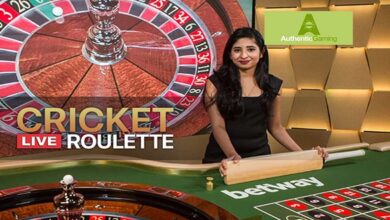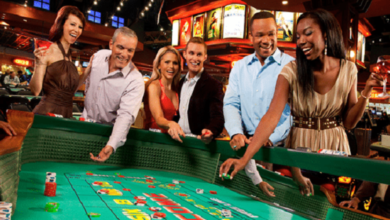The Easiest Game to Beat: Blackjack

Dealing out Blackjack Basics
Blackjack, or 21 as it’s also called, is a card game with a very clear-cut objective: You try to beat the dealer. Not your neighbor to the left. Not everyone else at the table. Just the dealer. And you have three count ’me, three ways to win.
The news gets even better — the dealer must stick to some restrictive rules that favor the players. And following a number of simple strategies helps you to improve your odds of beating the house.
Setting the scene
Even if you’ve never set foot in a casino, you’re probably familiar with blackjack from the movies. For example, who can possibly forget Raymond Babbitt, the savant in Rainman, crushing the tables at Caesars Palace? Whether on the silver screen or in the real world, you play blackjack on a semicircular, felt table that seats up to seven players on the half-moon side of the table, while the dealer stands opposite. These blackjack tables are clustered together into pits, which you usually find in the middle of a casino. The only other accoutrements to the game are the cards — the game uses anywhere from one to eight decks (more about that in “Dealing what’s in the cards” later in this chapter) — and the chips, which you use to make your bets. In addition, small placards indicate the table limits and minimum and maximum bets allowed.
Finding a table: Strategic seating
Blackjack begins by selecting a seat at the table. Typically, a blackjack table allows for five to seven players. Whenever you see an empty seat at a blackjack table, you may assume it’s for your taking (unless chips or a coat are holding the spot for a player who just stepped away for a moment or unless some player is playing two hands). In most cases, joining a game in progress is okay, although some tables have a No-Midshoe Entry policy (usually marked by a sign at the table), which means you have to wait until the shuffle before playing.
Homing in on house rules
Blackjack rules are fairly similar worldwide — with a few variations. Sometimes a small placard sitting on the table indicates where the casino stands in regard to certain scenarios. If you don’t see a placard, you may ask the dealer what the house rules are, even when you’re in the middle of a hand
Dealing what’s in the cards
All right, you’re situated at the table, you’ve made your bet in the betting box, and your heart is pumping like a jackhammer. The dealer flashes you a warm smile, wishes you good luck, shuffles the deck, and asks you to cut the cards. (Check out the sidebar “Cuts and burns: Ensuring shuffling safety” for what you need to know about cutting the deck.) If you’re playing a one- or two-deck game, the dealer holds the cards in his hands and deals you two cards face-down. You can pick up these cards, but make sure you only hold them in one hand.
Betting Your Bottom Dollar
On the felt in front of you is a betting circle or betting box. Place your chips in this spot to indicate how much you want to bet on the upcoming hand. You must make all bets before any cards are dealt. After you make your bet, you aren’t allowed to add, take from, or touch the wager again. After the hand is resolved (the dealer has paid out the winners and collected chips from the losers), you may change the amount you wager for the next hand.
Playing Your Hand
After dealing, the dealer addresses the players from left to right, asking them to take action. At last — the moment of truth. Now your skill and understanding can improve your chances of beating the dealer. Unlike many of the casino’s games, blackjack isn’t based entirely on luck. Skill and strategy play a significant role in who wins at the blackjack tables — and part of the fun and challenge is weighing the various options you can use in a hand.
Strategizing in the computer age
After you have a little experience under your belt at the blackjack tables, I recommend studying the complete version of basic strategy in this section. Mastering basic strategy definitely takes a little work, but the additional gain is very worthwhile. Following basic strategy (rather than the simplified strategy offered earlier) cuts the casino edge against you in half — to a half percentage point or less — by far the best odds of any table game played against the house.
Summary
When playing blackjack, you want to ensure that you don’t make any faux pas. Just like in other casino games, etiquette is important when playing blackjack. Blackjack is a fairly social game, and talking openly about your hand with other players is common. But make no mistake, blackjack — along with poker — boasts a long history of innovative or desperate players who cheat in order to get an edge. And modern casinos are vigilant about stopping any suspicious activities that suggest card-marking or other nefarious techniques.


